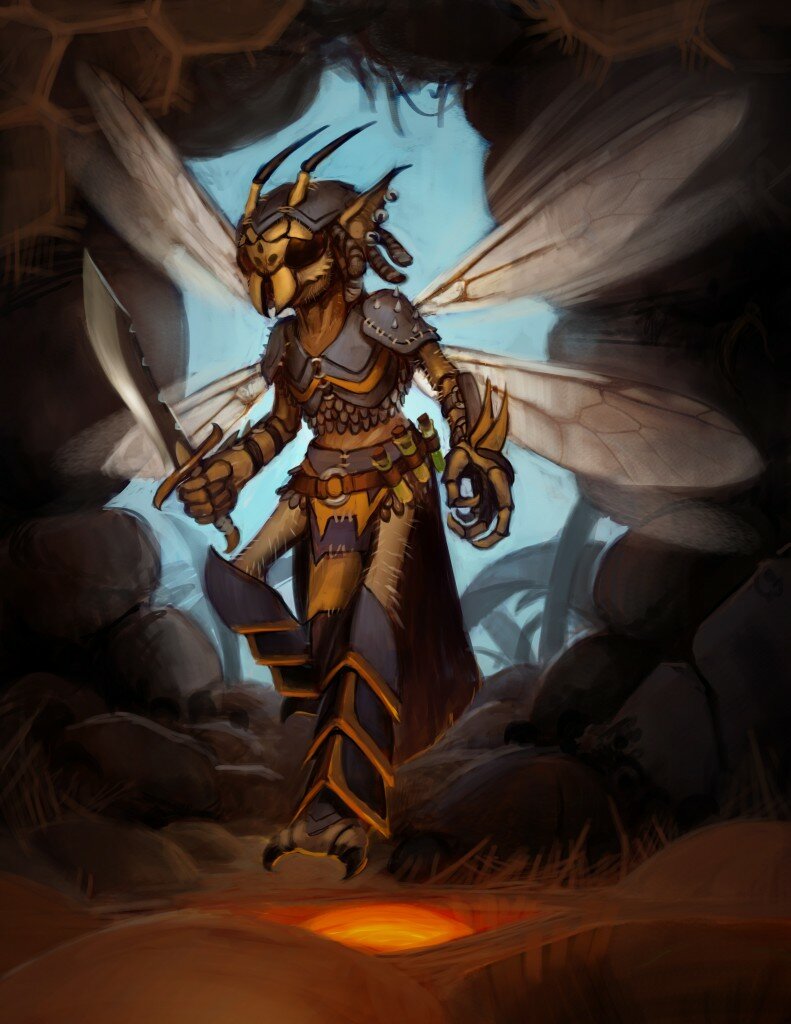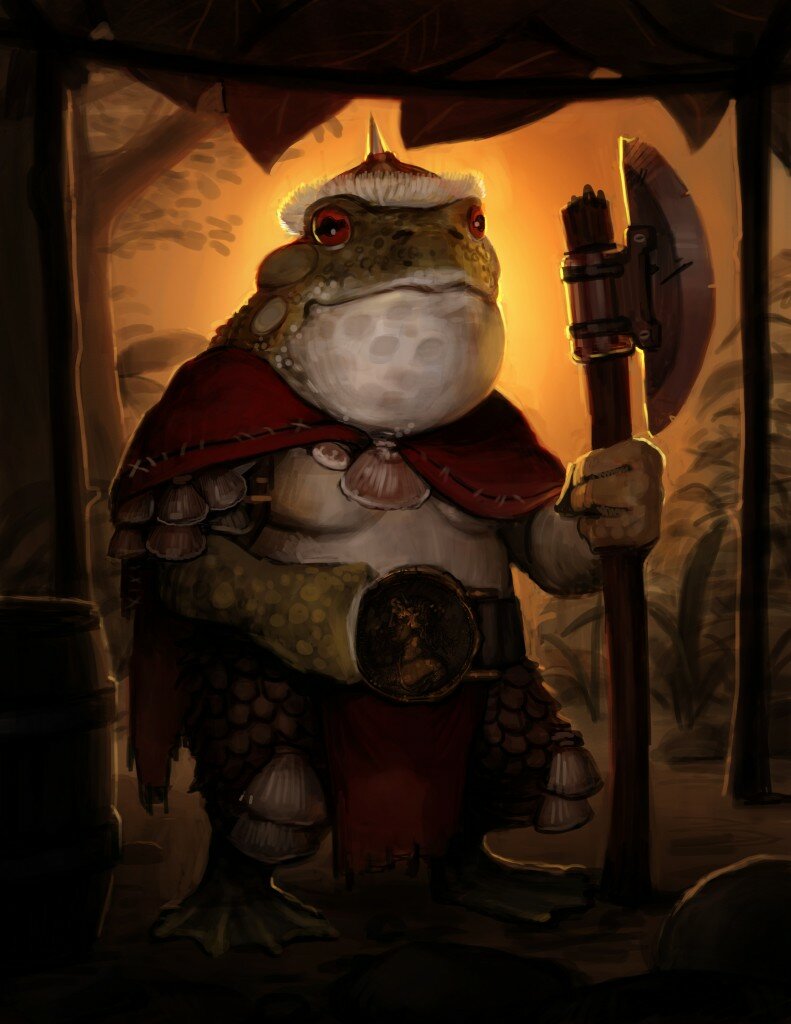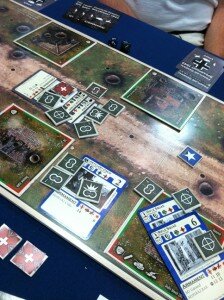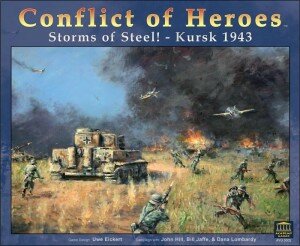Post by: Joshua Buergel and Grant Rodiek
Introduction
Josh and I have been working on Wozzle collaboratively for months. We’re so pleased with this initial experience we have even begun working on other designs (yes, plural). Josh lives in Seattle, WA, and I live in San Francisco, CA, so we had to figure out how to design together over distance. Thankfully, it’s easier than dating over distance.
We wanted to write about our experiences with collaborative design, our relationship, tools, and processes as we thought it would be interesting for other designers.
Vision.
Grant: I’m surprised we’ve never had a conflict of vision. That always seems to be the death of any design partnership. Perhaps it has to do with our origin story? Josh came in as an enthusiastic developer and before too long it was clear we were partners. I guess he just knew, “signing up,” what the game was and he agreed with that?
Josh: It helps a lot that it started a solo design. From the beginning, I think the vision for the game was pretty clear, and it hasn’t strayed from that original vision much. The mechanics have changed a lot, but it’s still recognizable as the same basic game. It also helps that I’ve been the developer on several designs in the past, and have tried to find ways to work with other designers. What got me into the project was the essential appeal of the core idea, and since I’ve been happy with that idea, it’s made it easy to stick to improving the game.
I think it also helps that we’re both apt to use persuasion as our primary tool in interactions. At no point have either of us ever tried to resort to any kind of coercion to get our way. The dynamic is one of trying to convince the other that something is a good idea, which is a good intellectual exercise and keeps conflict to a minimum.
Grant: Yeah, the persuasion note is a good point. It ultimately feels like we’re pitching to each other. Which I think is good, because if it makes it past that first hurdle, and not all ideas do, it must be at least somewhat better. Right? Right?
Josh has done a lot of professional development work with GMT Games and that can’t be overlooked. And, it should be noted, on way bigger games. I remember when Josh first started helping me on Brigade’s rules and I thought he had an evil knack for finding every problem in a rules document.
Let’s talk about our communication methods.
Grant: Fundamentally, our relationship exists in 3 places: through comments in our Rules and brainstorm documents, using Google Drive, through Gmail conversations, and via Google Talk instant messenger. We’ve been very dedicated to having up to date, central documentation. Our rules are always current. I think that helps keep us rooted so we always know what we’re discussing.
Josh: I think working in technology, like we both do, really helps us out here. We’re both comfortable with these sorts of digital tools and have no trouble with a conversation distributed across several channels like this. Having it all be available and searchable at all times of course is really important.
A useful working habit here as well is that we’ve gotten pretty good about responses in a timely fashion. Not necessarily instantly, if we have stuff going on, but most documents, changes, suggestions, and other pieces of correspondence usually get a look within a day or so. That keeps thoughts fairly fresh and keeps the number of confusing “didn’t we already discuss that” conversations to a minimum.
Grant: Come to think of it, this is a reason some of my past tries with collaboration have failed. We have a similar work schedule and ability to spend time on the project. It doesn’t help if one person works on it daily and the other only has time to do it weekly.
We also both work as managers with teams ranging from 5 to hundreds of people. I can’t help but think that’s made us generally good at written communication. It’s important to be precise and concise when using written things to discuss design or anything really.
Josh: Essentially, forcing ourselves to have all of our thoughts written down between each other has made the translation into actual user-facing rules a much easier transition. No video chats! We’re working in what is essentially a written medium, so writing should be more than enough for our collaboration as well. I only know what Grant sounds like because of his gameplay videos. He hasn’t the foggiest what I sound like (but will at some point).
Grant: I enjoy the mystery.
One thing I think has helped us a great deal is our weekend schedules. Josh is never around his computer on the weekends. He is out and about with the kids, etc. I’m sometimes glued to my computer, other times also bumbling about with my dog. I think we’ve done some of our most creative work over these weekends. I remember the weekend we switched to the new deck format and came up with Arcana we had a 90+ email thread. Just short quips and notes back and forth from our smart phones.
I’m not sure if it’s exactly something others could engineer, but I think having that “away time” to think in brief has been very useful for us.
Josh: Yeah, I spent most of that weekend at a BBQ or at the park, watching my kids run around, typing stuff on my phone. I can’t really emphasize enough how important being able to usefully contribute on my phone is. It really does help that you’re able to translate some of my more scattered thoughts into a more permanent document on these sorts of occasions.
Grant: Some of our best brainstorms have been triggered by quick throwaway notes. Just a short sentence with the base question. That “fire and forget” lets the other person do a little imagination their end and, as you discuss it, you meet somewhere in the middle.
Josh: We should show the email where I started floating the idea of a tarot-inspired special suit. Looking at it, it’s downright incoherent, but it got the wheels spinning, so it did the job.
Grant: I remember it made zero sense, but Josh was really into it. I think I asked in 2 or 3 replies, “Okay, but what are you talking about?” We’ve gotten better at prefacing nutty ideas with “this is nuts” or “Just tossing this out,” and also setting up for things that actually matter. I knew Josh was trying to get to something important with the Tarot, and he was.
One thing I think has been both a challenge and a sign of our maturity is that there are times when one of us has a really stupid idea, but within that is a kernel of genius. Upon reading it, the first instinct is “no this is dumb.” But, in most cases, we’ve said: “go on, explain what you’re talking about.”
Letting the other person get the idea off their chest and past the knee-jerk has led to great stuff. It’s hard to do but you really have to actually discuss every idea until it’s clear it’s awful or good. It has to have time to breathe.
Granted, there was this one idea Josh had that I just did not like. I couldn’t get over it. I can’t even remember what it was specifically, but I compared it to Fluxx and felt really terrible afterwards. It was a dire insult.
Josh: Yeah, that one hurt. I’m still smarting. It was some spell idea way back that involved some crazy rearrangement of the table. Maybe some endgame condition.
Oh! It was my idea for a “0” Arcana card. I think it allowed an upgrade on your hand. Some half-baked thing.
Grant: Funny enough, we actually have the upgrade card IN the game, just not with the 0. So I guess we both did a Fluxx-ish thing?
Josh: If one goes back far enough, they’ll find me beating the drum for that idea a long, long time ago. Grant rightly resisted it in a bunch of its more lame iterations until it finally found fruit. Again, a sign that there are very few ideas that are so bad as to be worthless.
But at any rate, there has to be a lack of fear in any kind of creative collaboration. When I’ve had one of my brainwaves, the reaction cannot be “that’s stupid, you’re stupid, and you should feel bad” even if that might be the truth. Some of those ideas really have been rotten to the core, but a number of them have led to a useful conversation and some nice features. Even ideas where one of says “I know this is crazy…” are still worth having. A certain unfiltered brainstorming feel should be maintained at all times.
I’m not sure how often it’s happened on Grant’s end, but there have been very, very few things where I’ve just been totally repelled by an idea out of the gate. I might think one was kind of daft, but it doesn’t hurt to talk about those.
Grant: Well, a good thing in design, solo or otherwise, is to ultimately think about the end result. Sure, the method to achieve it might be silly. But, if the end result behind it is solid and it improves the experience? Well, then you have a great talking point. If you know where you’re going, you can identify the right steps to get there.
With Arcana for example, Josh said that it would be cool to have special cards, based on Tarot, that let players do neat things from their hand. That seemed like a good idea to add a significant element to the game. Now, it was a bit far out in that it added a lot of complexity to the game, but it was the right complexity and we had to discuss it.
I think the right way to go about it, which we more or less do, is say:
- Here is the high level idea
- Here is the problem it’s trying to solve or the opportunity we can take advantage of
- This is how it fits
It’s then on your design partner to seek understanding first, before anything, THEN begin to discuss, evolve, and debate. Always make sure you critique from a standpoint of understanding. A phrase I’ve used often is: “can you elaborate further.”
Josh: That’s probably because I have more of a habit of dashing off a half-formed thought and then filling it in later.
There have been a few explorations that led nowhere, and most of those have been because they didn’t really fulfill a mission. It was experimentation for the sake of it, but it didn’t really serve a goal for the design, so it led nowhere. I’m thinking here particularly about some of the thinking about scoring systems, although that might still turn into some interesting variants.
Grant: I think we can provide cool variants for Wozzle for years.
Josh: That Arcana path came from a thought experiment, which has been a handy tool during the project. Essentially, we imagined what it would look like to pitch the game to a few publishers, and what they might think about the project and what we’d have to change. The end result isn’t necessarily where we thought it would have gone, but Grant proposed the idea of thinking about it and it spawned a useful discussion.
Source Control.
Grant: I think source control is really important. Having one person who actually makes the changes seems to have helped us keep things straight. In our current setup for Wozzle, I actually update the documents, Josh comments. However, on our other projects, there are some things Josh has the “lead” on and others where I have the “lead.” Basically, it keeps things sane and prevents them from getting out of control. You don’t want to have to worry about the “right” version or what you both agreed upon.
Josh: I’ve been a little surprised at how un-restricted that setup has felt. At first, I was itching to just make some of the changes directly to the rules document, figuring that would be more efficient. But it’s just not, at least for a game of this size. Putting my proposed changes in comments allows us to have a discussion (if one is warranted) or at least lets Grant see those changes before they go in. It means he doesn’t have to worry about looking at a diff to see what has changed between two revisions of the rules.
One area that I wish we had a better tool on is around cards. Currently, I have to just send my comments on card wording in an email. That works, but it’s out of context, and it’s not as easy for me to do quick reviews of that text.
Grant: The card stuff IS a bit slow. I don’t mind doing the card work and it’s very quick for me now. But, you don’t have an easy way to comment and it really helps seeing it on the card. I wish Google Drive had a graphics program that actually let you make stuff you can use. As it stands now, Drawing is basically good for mock-ups and not much else.
Josh: Even just annotated screen shots might help. Actually, maybe I should try Skitch?
Grant: That looks nice. I’d be fine with that. You could theoretically take the PDF and just write over it, yeah?
Josh: I think so, yes. I’ll give it a try as we work on new Arcana suits.
Another area where things have worked out well is bringing some disciplines from our day jobs back into the project. I’ve worked on a simple simulator for us to use to evaluate changes, while Grant has been doing much of the project management. That division of responsibilities has worked well here.
Grant: That simulator has been fascinating and so useful. It’s helped us do some quick, gut check simulation (or hundreds of thousands of simulations) on probabilities. It really helped identify the Crossways, which we may have tossed out without data to back us up.
In my day job I’m a producer on a very large team. My job often consists of tracking items in spreadsheets, talking to developers about issues, sending emails, hosting meetings. Doing projects like this lets me use those skills, but in some ways it gives me a chance to do things like I wish I could at work.
Windmills.
Grant: Something we’ve taken turns on lately is asking really tough, vague questions of the project. Asking how we can go to the next level, typically when we’ve just hit a nice smooth point after solving the previous problem. I’m curious how you feel about some of these when you get an email from me that says something like, “how can we make Wozzle more like a game Gamewright would publish?”
Josh: Those have been great. I think it’s easy to get complacent in a design. You’ve played it a bunch, your friends all seem to enjoy it, folks who are friendly to you are encouraging, and you start thinking that it’s pretty locked up. Having another designer there to ask questions, to keep the team restless, has been handy.
I think we could have stopped a month and a half ago and had a game that people would have enjoyed. It would have been a perfectly good, solid game. If it was just one of us alone on the project, it might very well have stopped at that point. But the continual questions have kept us honest, kept us focused on which are the worst parts of the game at any moment. “What if?” has been a great start to many of these conversations.
Grant: I definitely hit that point working on York by myself. I distilled it to this one precise thing. But, it clearly wasn’t ready at that point. Without a partnership it would have lingered.
Josh: What about content? I feel like it’s been much, much easier to fill out our needed content in this project than other, similar projects. I’ve been struggling on some of my solo projects to generate everything, but that hasn’t been much of an issue here.
Grant: I feel like we were born for the content here. I’m an action card fiend. Farmageddon has actions, York has Tactics, Sol Rising has 55 Unique ships. As a designer I’m obsessed with them. This was just sorta my deal. And you are a poker expert and dear god have 3000 games. You know every poker variant and then some. I just think we have the skills needed to think of ways to manipulate cards.
Perhaps it’s also just the simplicity of the premise? Wozzle doesn’t really have much theme. If you’re making a card for your dungeon crawler it has to be rooted to the experience mechanically and thematically. For Wozzle, our only gate is answering the questions:
- Is this fun?
- Does it fit our game?
Josh: It did feel like, at times, we’d sort of reached the limits of design space for spells. I sometimes thought that there were only so many ways you could manipulate the cards within our rules set, and that we’d more or reached the limit of the good ideas. I was wrong, happily, as we were able to break into some new ground in a couple different ways by manipulating the costs of things.
But that’s again an area that I might not have broken into on my own. I might have seen the diminishing returns on spells and thought that the space was pretty much used up.
Grant: We go in cycles, for sure. I think we use a key term, exhaust it, then move on like barbarians to the next idea. We used to never do stuff with discard, now it’s here and there. We fully explored show, interaction, theft. I definitely think it helped, whether we intended to or not, to explore each one in a focused manner. But, yeah, I’m surprised we kept coming up with ideas. I remember after we cut spell 4 or 5 (now on 23+) thinking how I hoped we didn’t have to come up with too many more.
Graphics and Key Terms
Grant: The other thing that helped is we established a graphic design early. We knew we wanted big, chubby text and we worked really hard to identify key terms. That gave us not only a language to use between ourselves, but helped us frame the box, so to speak, on card content. That was a place you really helped, identifying key terms and forcing us to use them better.
Perhaps that’s another good bullet: identify key terms and a language for your project. It’ll frame the discussion.
Josh: It’s such a programmer thing. I think of a game term as nothing more than a macro, a subroutine. The game says “Add”, but in reality that expands into an entire sentence. My day job has me thinking in those terms all day long, where I can re-factor and pull things out, so it’s natural for me to extend that discipline in my hobbies. But it has been a solid area of collaboration, having a set of agreed upon terms and a sort of implicit working language. It’s made it possible for us to both think in Wozzle terms, which is useful.
Here’s another place where I think having two people on the design helps, which is that it gives a safety net. It’s unlikely that we’re going to accidentally screw up the design, because there’s another person there who understands things just as well. In order to drive off a cliff, we have to both not be paying attention
Grant: I think another benefit of remote collaborative design is that we have two core groups with whom to test. I have about 10 people that have played the game at last 5+ times each. But, my core group is different than yours. They have different tastes, preferences, and play styles. In a way, it’s like I’m blind testing for you and vice versa.
Josh: That’s a great point. I’ve got a core group of a half-dozen or so people that I’ve been gaming with on a weekly (or more!) basis for 18 years. These are folks that play huge, long games with me as well as a bunch of smaller games. It’s a pretty picky, analytical group, which is great for a lot of things but can sometimes get down in the weeds. Having another core group balance that out has been really handy.
Key Points to Summarize
- Make sure you both agree to the goal of the design.
- Take advantage of good software to work together. There’s no excuse.
- Use careful source control so that changes don’t get lost in the mix-up.
- Always discuss ideas from a point of understanding. Make sure you understand before you say “no.”
- Challenge each other, to keep the design moving forward. Even if it seems stupid, ask “what if”
- Create a glossary of terms to frame the discussion.
If you have specific questions we didn’t address, ask them below! We tried to pursue this topic conversationally, so at times we meander or jump from point to point. Apologies!






